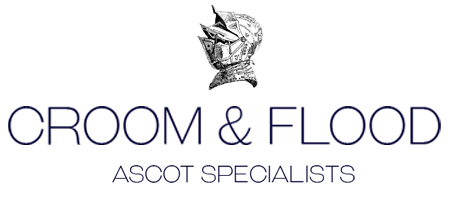
Christian Martin Monsen of Norway enjoys an early cravat.
Photo: Municipal Archives of Trondheim
A work of art as masterful as the ascot tie takes time to reach perfection over many fashionable years. You could look at the ascot tie as the father to the modern man's tie and be thankful that there was a day when men enjoyed something looser around the neck. Let's look at the history of the ascot tie for sale in its entirety.
Horse racing anyone?
It all started at the Royal Ascot race, probably around June of 1711, when Queen Anne visited the now famous horse racing grounds. The track is still owned by the royal family where they convene every year to dress the part and enjoy the competition among horses and men. This is where the ascot tie for sale was born.
Arriving in a horse-drawn carriage every year, Elizabeth II, The Prince Of Wales, and other royals attend Royal Ascot as a much-needed getaway from their busy lives of charity and pomp.
This exciting event is a major cultural event for the British, because of this, attendees' clothes are more important than the actual race itself.
Royal Ascot is Europe's biggest and most attended racing event with over 200,000 people visiting each year. Throughout the race week, there are multiple events each day. Ladies get to enjoy the Gold Cup on Thursday--an event tailored specifically for them and the high mark of the event.
Open to horses that are older than four years, the Gold Cup is a Group 1 race (top tier). The distance is two miles and four furlongs. Just long enough for fashionable ladies to show off their ascot inspired clothing.
The title of the race does not technically include the word "ascot," but it is part of the event.

People in a horse carriage who are dressed really well at the Royal Ascot races
Photo: Mike Fleming
A town named Ascot
The tie name comes from the town: Ascot, in the cozy county of Berkshire in England. It was only in the early days that the ascot tie was seen at the horse racing events.
The tie was actually not very popular by the time King Edward took the throne and the ascot races became a big deal for the royals and British public. Morning dress is the regular attire that is worn at the event, and ascot ties are seldom worn there today.
The ascot tie was worn with the stick pin to liven up the cloth and make sure it didn't flap in the wind, in those days.
The upper class wore the ascot every day, whereas the average, middle-class bloke put on an ascot to take his wife out to the ballet or formal event.
By the 1800's the middle class had grown, and the modern man was headed to work in the heart of industrial age England. At that time, the ascot tie for sale was a common site in men's shops throughout Britain.
During this time the ascot found itself around the necks of well-dressed commoners with a flair for fashionable clothing. The ascots were often made of silk and were much more freeing and comfortable for men who trashed their older cravats.
To our British friends, what is often thought of as an "ascot tie" in the United States is called a "day cravat." The cravats and ascots we seen worn in weddings tend to be thicker, more formal, and less patterned than our favorite ascots here at Croom & Flood.
The Oxford design for a cravat in the wedding world is more common and is worn with morning dress, similar to the styles seen at the Ascot races today. This is only the beginning of the ascot tie for sale.
Today and beyond
Today the ascot tie is used to dress up a casual style, but can also be used as a formal option, though the "cravat" with a stick pin tends to be the most formal. By the mid 20th century the ascot was seen worn by movie stars and the like, with no jacket in the rough, or with a jacket for a casual experience, out on the town or a semi-formal meeting during the day.
The ascot tie found love with golf players during that same period--often seen worn on the greens to keep the neck warm and stylish. The Duke of Windsor often wore ascot ties for these daily golf games on royal grounds.
Later, teens took to the ascot tie craze by wearing them as parts of the mod movement towards the end of the 1960's.
The uses for the ascot have grown over the years as a dress up item for a laid back dandy look, depending on the pattern. Think smaller patterns for more formal or larger patterns for casual.
